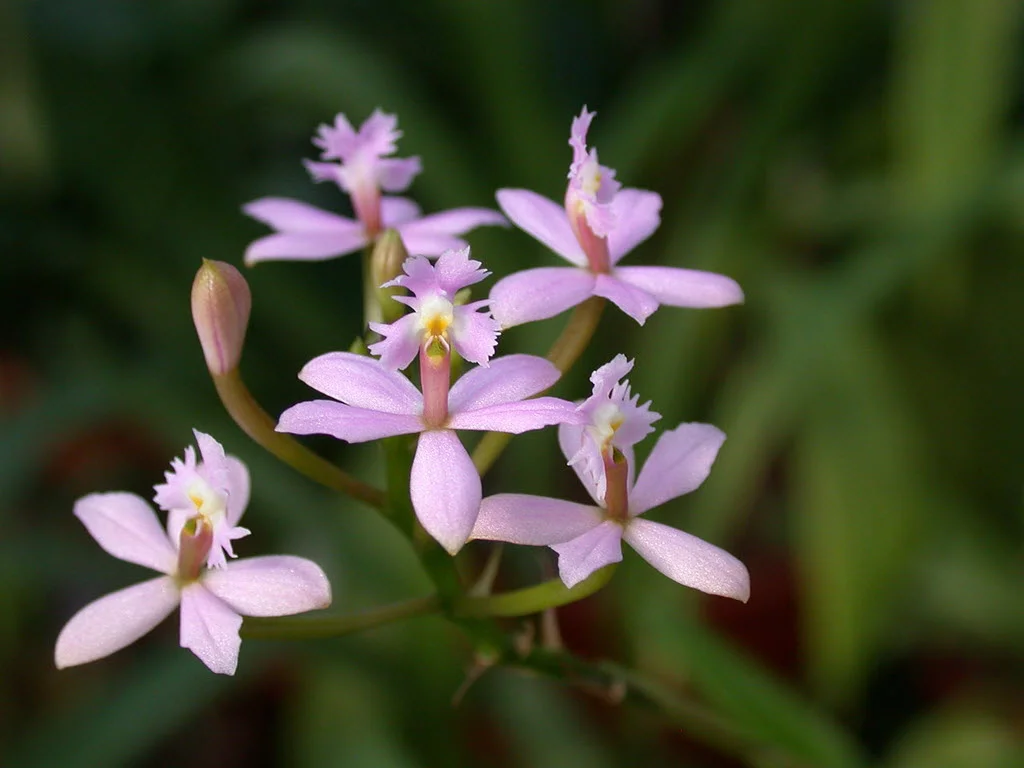Table of Contents
Pronunciation: DYE-sa or DEE-sa
Introduction
The Disa Orchid is a unique orchid that requires completely different care from other orchid species. This plant loves to sit in water, and it does very well with a water table as this allows for the water to circulate around its roots.
Disa Cornuta
The Disa is classified as a terrestrial orchid with tuberous roots. The leaf size and shape varies depending on the plant type. However, they all start from rosettes on the plant's base. The flower sizes range from less than an inch to over four inches across in eye-catching blues, yellow, white, pink, orange, and lavender.
Temperature
Disas are pretty forgiving of a wide temperature range. Ideally, they like to have their root temperatures around 70°F (21°C) during the daytime hours. If you have higher humidity, they can withstand temperatures over 100°F (37°C), but this shouldn't be prolonged, as the roots could get damaged. During the night, you should keep your plants between 55°F to 60°F (13°C to 16°C).
These plants can also withstand lower temperatures down to very light frost for shorter periods of time as well. However, keeping your Disa's root temperature slightly lower is the key to these plants thriving.
Light
You'll have to keep your plant in bright light. If you can avoid root overheating, direct light is also an option. However, if you want to make it easier, consider setting your plants in partial shade. You can also utilize netting to break up the sunlight.
Monitor your orchid and look for signs that the roots are overheating, including brown spots or a slimy appearance. If you see this, your plant may be getting too much sun.
Water and Humidity
These plants differ from other orchids as it is very difficult to overwater them. They like sitting in water constantly, and many people use water tables to keep the water constantly flowing around them.
Your water has to be pure because these plants grow in mountain streams. Distilled water, rainwater, or bottled water works well, or you can invest in a reverse osmosis system.
They are prone to fungal and bacterial infections due to their love of water, so you'll want to watch for this. Finally, consider adding sphagnum moss to the water to increase the pH as they need more acidic conditions. The humidity should be around 70%.
Feeding
You should fertilize your Disa Orchid once a week with a well-balanced fertilizer mix. You want your total dissolved solids (TDS) meter to read at or under 250 ppm after you add the fertilizer. For a rough estimate, this works out to between one-sixteenth to one-eighth of a teaspoon of fertilizer per gallon of water.
Once your plant blooms and dies back in the fall, cut your fertilizer back to once every other week because your orchid is about to enter a very slow growth period. You can resume normal feedings in the Spring.
Potting
You can plant your Disa in water tables, buckets of water, or in plastic mesh pots. You should use a mix of pure water with sphagnum moss to increase the pH levels and to retain water. The growing medium should be very lightly added, and you don't want to bury the roots.
You can repot your plant every two or three years, and you should cycle out your water at least once a month to lower the chances of bacterial or fungal infections. If you're growing your plant in plastic mesh pots, you want to plant them in bigger ones because they grow rapidly.
Video
Rachel, from The Unglamorous Gardener from Ireland, shows off her Disa kewensis. She also talks about how to take care of this beautiful orchid.
Even if you are a beginner, there is an orchid that would be perfect for your current skills and climate. Check out our comprehensive list of the different types of orchids that you can consider growing.











